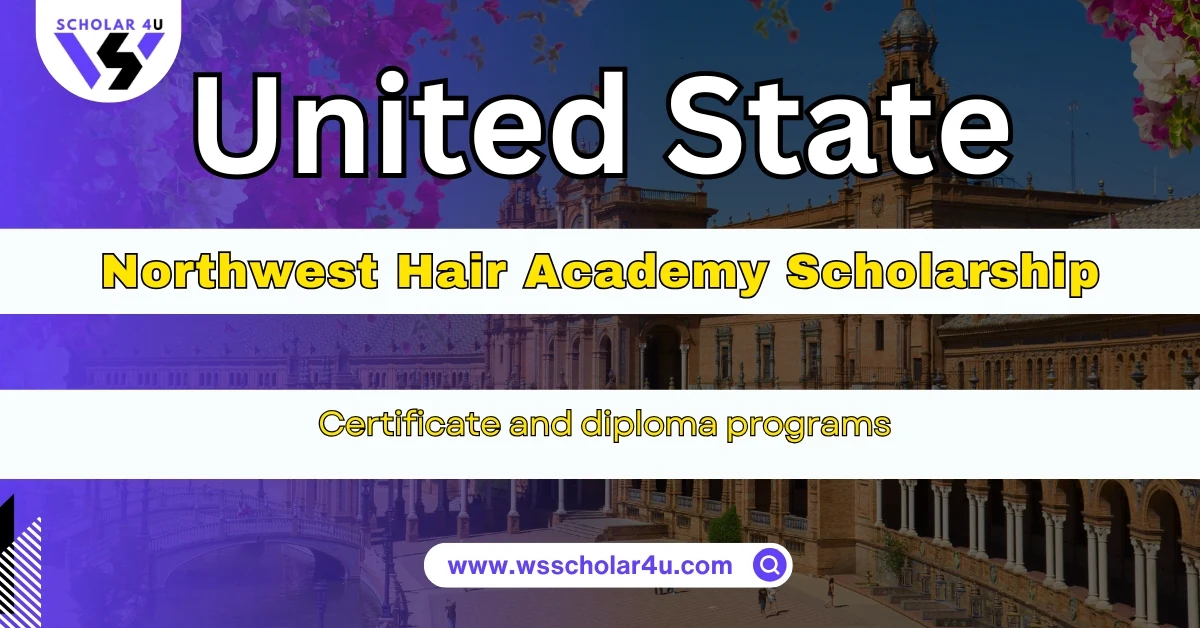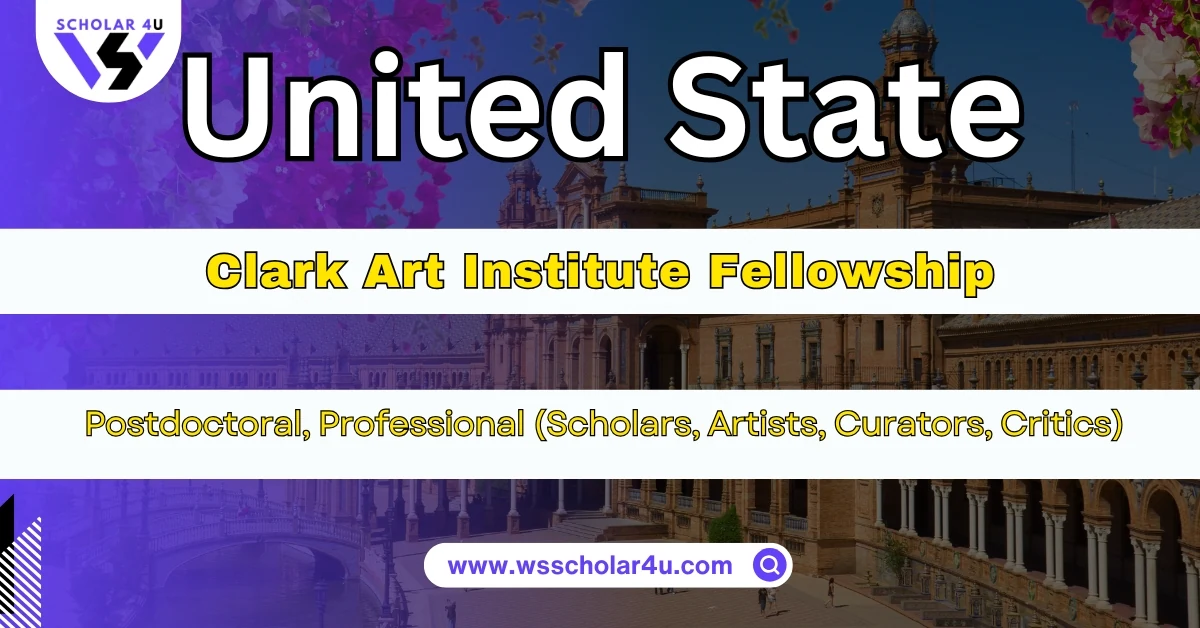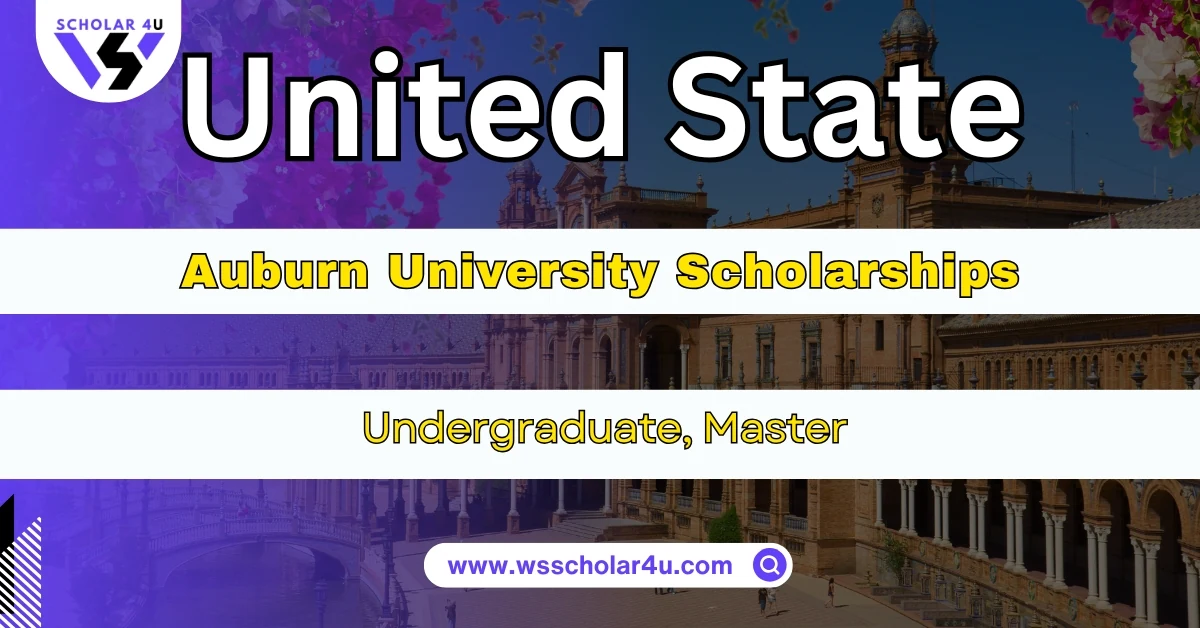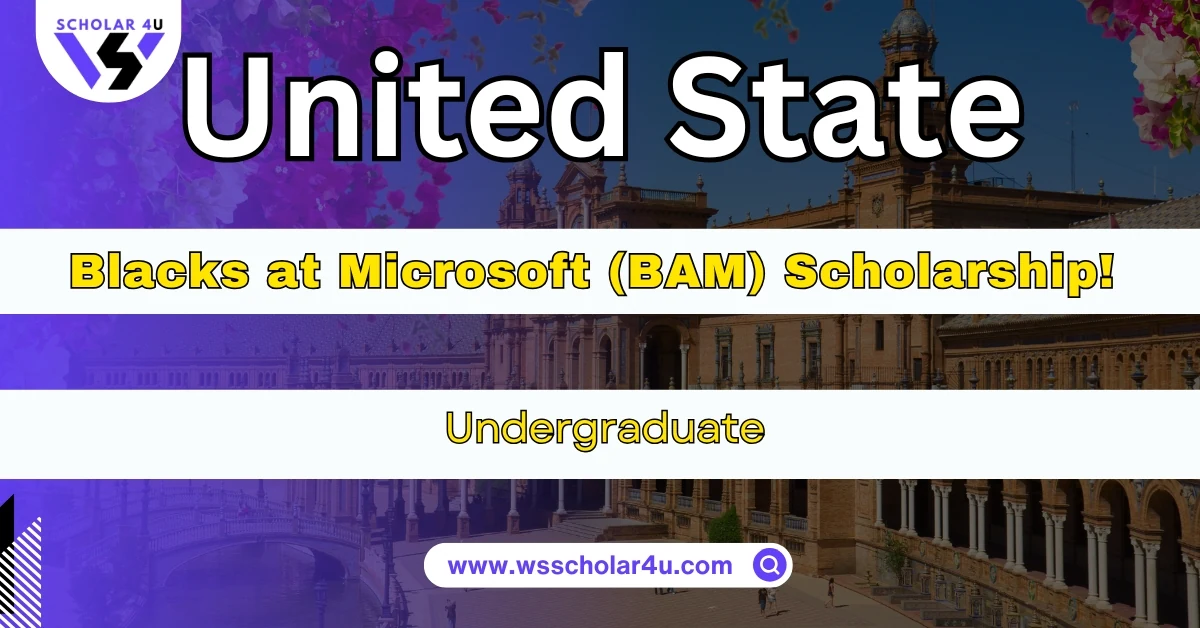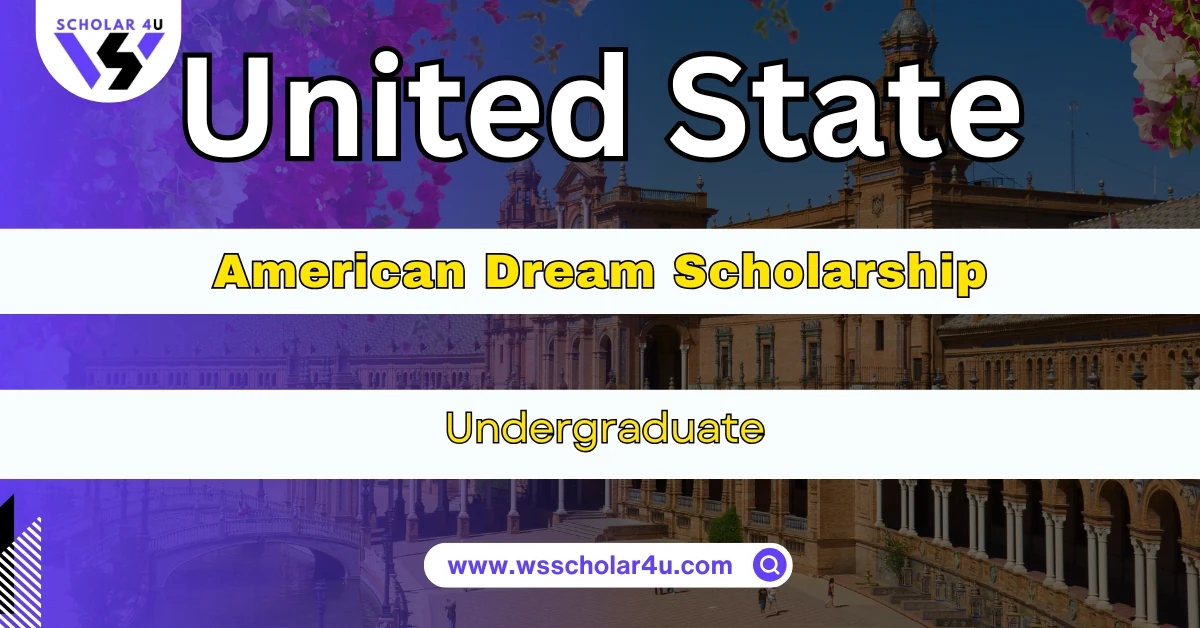Table of Contents
ToggleIt can be a big dream to study for a PhD in the USA. Many students worry about money. The good news is, there are many fully funded scholarships for PhD students in USA 2025. These special scholarships help pay for school and living costs. This means you can focus on your studies without stress. This guide will tell you about some of the best fully funded scholarships, so you can find the right one for your big dream. We will explain who can apply and how to do it.

What are Fulbright Scholarships?
- Name of the institution offering the scholarship: The Fulbright Program is sponsored by the U.S. Department of State. It is administered by various organizations, including the Institute of International Education (IIE) in the U.S. and binational Fulbright Commissions/Foundations or U.S. Embassies in participating countries.
- Origin or background of the scholarship: The Fulbright Program was created in 1946 by Senator J. William Fulbright. Its goal is to increase mutual understanding between the people of the United States and other countries through educational and cultural exchanges.
- Who is the ideal candidate? The ideal candidate is an academic, young professional, or artist who wants to study, teach, or conduct research in the U.S. They should have a strong academic record, leadership potential, and a desire to promote international understanding.
- Total value of the scholarship: The Fulbright Scholarship is fully funded. This means it covers all major costs for the program’s duration.
- Number of seats available: The number of scholarships varies greatly by country and program each year. It is very competitive, with over 150 countries participating.
- Start date of the scholarship: The start date usually aligns with the academic year in the U.S., typically August or September, for the academic year 2026-2027.
- Application deadline: Application deadlines vary by country. For the 2026-2027 academic year, deadlines are generally in May or June 2025. For example, some countries have a deadline of May 14, 2025, or May 31, 2025, for the 2026-2027 academic year.
- Is the scholarship currently active? Yes, the Fulbright Scholarship program is always active and accepting applications annually for future academic years. For PhD students, applications for the 2026-2027 academic year are typically open now or will open soon, with deadlines in mid-2025.
- The month when applications usually open: Applications typically open in April or May each year for the academic year two years in advance (e.g., May 2025 for the 2026-2027 academic year).
Fulbright Scholarships Coverage
- Full or partial funding: Full funding.
- Tuition fees: Covered.
- Living expenses: A living stipend is provided.
- Books and study material: Often covered, or included in the stipend.
- Travel expenses: Round-trip airfare to and from the U.S. is covered.
- Any other benefits: Health insurance, visa sponsorship, and participation in enrichment activities are usually included.
Eligibility Criteria
- Is it for U.S. or international students? Primarily for international students who want to study in the U.S., there are also programs for U.S. citizens to study abroad.
- Eligible countries: Over 150 countries participate. Applicants must apply through the Fulbright Commission/Foundation or the U.S. Embassy in their home country.
- Minimum qualification needed: For PhD programs, applicants usually need a Master’s degree or comparable education (at least 18 years of formal education).
- Required certifications: Proficiency in English (often proven by TOEFL) and GRE/GMAT scores are usually required. Finalists may have the test fees covered.
- Required documents:
- Application form
- Academic transcripts and degrees
- Study/research objective statement
- Personal statement
- Letters of recommendation
- Passport scan (for international applicants)
- Confirmation of enrollment in a doctoral program (if applicable)
- Whether the application is online or offline: Mostly online through the IIE application portal.
How to Apply for the Fulbright Scholarships
To apply for a Fulbright Scholarship:
- Find your country’s program: Visit the official Fulbright website and find the specific program details for your home country. Eligibility and deadlines vary.
- Understand requirements: Read the specific eligibility criteria and application instructions for the Fulbright Foreign Student Program in your country.
- Prepare your application: Gather all required documents, including academic records, personal statements, and letters of recommendation.
- Create an account: You will typically create an account on the online application portal (often managed by IIE).
- Submit your application: Complete all sections of the online application form and submit it by your country’s deadline.
- Interviews: If selected, you may be invited for an interview.
- Standardized tests: Finalists may need to take the TOEFL and GRE/GMAT exams, with costs covered.
Link to the official website: Fulbright Foreign Student Program
What is the Knight-Hennessy Scholars Program (Stanford University)?
- Name of the institution offering the scholarship: Stanford University.
- Origin or background of the scholarship: The Knight-Hennessy Scholars program was established in 2016 by Stanford University, with a generous gift from Phil and Penny Knight. It aims to develop a community of future leaders who can address complex global challenges.
- Who is the ideal candidate? The ideal candidate is a high-achieving student from any country who demonstrates independence of thought, purposeful leadership, and a civic mindset. They must be applying to any full-time graduate degree program at Stanford, including PhDs.
- Total value of the scholarship: The Knight-Hennessy Scholars program is fully funded for up to three years of graduate study. This makes it one of the most comprehensive scholarships globally.
- Number of seats available: Each year, approximately 100 new scholars are selected.
- Start date of the scholarship: The scholarship starts with the beginning of the academic year at Stanford University, typically in September.
- Application deadline: The application deadline is typically in early October for enrollment the following academic year. For the 2025-2026 academic year, the deadline is around October 8, 2025.
- Is the scholarship currently active? Yes, the Knight-Hennessy Scholars program is active and accepting applications annually.
- The month when applications usually open: Applications usually open in July each year.
Knight-Hennessy Scholars Program Coverage
- Full or partial funding: Full funding.
- Tuition fees: Covered for up to three years.
- Living expenses: A stipend for living and academic expenses is provided.
- Books and study material: Covered as part of the stipend.
- Travel expenses: A travel stipend may be provided.
- Any other benefits: Access to the King Global Leadership Program (KGLP), which offers workshops, lectures, and projects to develop leadership skills. Scholars also have a community hub, Denning House.
Eligibility Criteria
- Is it for U.S. or international students? It is open to citizens of all countries.
- Eligible countries: All countries.
- Minimum qualification needed: Applicants must have earned their first bachelor’s degree within four years before applying, and they must enroll in a graduate program within five years after earning it. They must also be applying to enroll in a full-time graduate degree program at Stanford (e.g., MA, MBA, MS, MD, PhD).
- Required certifications: There are no specific test score cut-offs (like GRE/GMAT), but strong academic performance is expected. English proficiency may be required depending on your previous education.
- Required documents:
- Online application form
- Academic transcripts
- Resume/CV
- Essays (personal statements, short answers)
- Two letters of recommendation
- A video statement
- In-person assessment (for finalists)
- Standardized test scores (GRE/GMAT/LSAT/MCAT if required by your Stanford graduate program)
- Whether the application is online or offline: The application is entirely online.
How to Apply for the Knight-Hennessy Scholars Program
To apply for the Knight-Hennessy Scholars Program:
- Apply to a Stanford Graduate Program: First, you must apply to and be accepted into a full-time graduate degree program at Stanford University. This is a separate application process.
- Start your K-H application: Visit the official Knight-Hennessy Scholars website to start your application.
- Create an account: You will need to create an account on their online application portal.
- Complete the application: Fill out the online application, which includes essays, a resume, and a video statement.
- Request recommendations: Ensure your two recommenders submit their letters directly through the K-H system. These letters are separate from your Stanford graduate program recommendations.
- Submit by the deadline: Make sure both your K-H application and your Stanford graduate program application are submitted by their respective deadlines.
- Finalist experience: If you are selected as a finalist, you will be invited for an in-person assessment.
Link to the official website: Knight-Hennessy Scholars
| You May Also like to Read: Best 6 Fully Funded Scholarships for Post-Graduates in Hungary 2025 |
What is the Facebook PhD Fellowship?
- Name of the institution offering the scholarship: Meta (formerly Facebook).
- Origin or background of the scholarship: Meta (Facebook) established the PhD Fellowship program to identify and support promising doctoral students conducting innovative and relevant research in areas of interest to Meta’s technologies and products.
- Who is the ideal candidate? The ideal candidate is a full-time PhD student engaged in cutting-edge research aligned with Meta’s focus areas, such as AI, machine learning, computer vision, natural language processing, AR/VR, and more. Strong research statements, impact, and recommendations are key.
- Total value of the scholarship: The fellowship is fully funded. It includes paid tuition and fees, along with a generous annual stipend.
- Number of seats available: A limited number of fellowships are awarded annually worldwide. It is highly competitive.
- Start date of the scholarship: The fellowship typically starts to coincide with the beginning of the academic year following the award announcement.
- Application deadline: The application deadline for the 2025-2026 cycle is typically in September. For 2025-2026, the deadline is September 20, 2025.
- Is the scholarship currently active? Yes, the Meta Research PhD Fellowship is active and opens for applications annually.
- The month when applications usually open: Applications usually open in August each year.
Facebook PhD Fellowship Coverage
- Full or partial funding: Full funding.
- Tuition fees: Covered for two years.
- Living expenses: A substantial annual stipend (e.g., $42,000 for the 2024-2025 cycle) to cover living and conference travel costs.
- Books and study material: Included within the stipend.
- Travel expenses: Includes a paid visit to Meta headquarters for the annual Fellowship Summit (if held in person). Conference travel costs are covered by the stipend.
- Any other benefits: Opportunities to engage with Meta researchers, potential for a paid internship at Meta.
Eligibility Criteria
- Is it for U.S. or international students? It is open to full-time PhD students from any country and any university.
- Eligible countries: All countries.
- Minimum qualification needed: Applicants must be enrolled in a PhD program during the current academic year in computer science, computer engineering, electrical engineering, system architecture, or a related field.
- Required certifications: No specific certifications are mentioned beyond being a PhD student, but strong academic and research records are essential.
- Required documents:
- Research proposal (typically up to 500 words)
- Two letters of recommendation (one must be from your university advisor)
- CV/Resume
- Academic transcripts (though not always explicitly listed, generally implied for PhD students)
- Whether the application is online or offline: The application is entirely online.
How to Apply for the Facebook PhD Fellowship
To apply for the Facebook PhD Fellowship:
- Prepare your research proposal: Craft a compelling research proposal (around 500 words) that aligns with Meta’s research areas.
- Gather recommendation letters: Secure two letters of recommendation, ensuring one is from your PhD advisor.
- Create an account: Prepare to apply by creating an account on the SurveyMonkey Apply platform, which Meta uses for the fellowship.
- Fill out the application: Complete the online application form, making sure to select the correct and relevant research area fellowship.
- Submit recommendation requests: Provide contact information for your recommenders in the application. They will receive an email to upload their letters directly by the reference letter deadline (typically early October).
- Submit your application: Submit your complete application by the deadline (September 20, 2025, for the upcoming cycle).
Link to the official website: Meta Research PhD Fellowship
What is the Rhodes Scholarship in Fully Funded Scholarships for PhD students in USA?
- Name of the institution offering the scholarship: The Rhodes Trust, for study at the University of Oxford.
- Origin or background of the scholarship: The Rhodes Scholarship was established in 1903 by the will of Cecil John Rhodes. It is the oldest and one of the most prestigious international scholarship programs in the world. It aims to develop outstanding leaders who are committed to public service.
- Who is the ideal candidate? The ideal candidate is an exceptional young person, aged 18-24, with outstanding intellect, strong academic achievement, leadership potential, integrity of character, and a commitment to service. They must demonstrate the energy to use their talents fully and a desire to make a positive contribution to the world.
- Total value of the scholarship: The Rhodes Scholarship is a fully funded postgraduate award. It covers all necessary costs for study at the University of Oxford.
- Number of seats available: Over 100 new Scholars are selected each year from various “Rhodes constituencies” (countries/regions) around the world.
- Start date of the scholarship: The scholarship starts with the academic year at the University of Oxford, typically in October.
- Application deadline: Application deadlines vary by constituency. For many constituencies, the deadline is often in July or August of the year before entry. For the 2026 intake, some deadlines are July 31, 2025.
- Is the scholarship currently active? Yes, the Rhodes Scholarship is active and accepts applications annually.
- The month when applications usually open: Applications typically open in June or July each year.
Rhodes Scholarship Coverage
- Full or partial funding: Full funding.
- Tuition fees: All University of Oxford course fees are covered.
- Living expenses: A generous annual stipend is provided to cover living expenses, including accommodation, food, and other personal costs.
- Books and study material: Included within the stipend.
- Travel expenses: One economy class airfare to Oxford at the start of the scholarship and one economy class airfare from Oxford at the end of the scholarship are covered.
- Any other benefits: The Scholarship covers the University application fee and the Student Visa fee. It also provides access to various development programs and a global network of Rhodes Scholars.
Eligibility Criteria
- Is it for U.S. or international students? It is for international students from specific “Rhodes constituencies” around the world, including the USA.
- Eligible countries: There are 25 Rhodes constituencies representing over 60 countries. Applicants must apply to the constituency where they meet the citizenship and residency requirements.
- Minimum qualification needed: Applicants must typically hold a bachelor’s degree (or equivalent) with a very high academic standard before commencing their studies at Oxford. They must be aged 18-24 (some constituencies have slightly different age limits).
- Required certifications: Academic transcripts, and typically English language proficiency proof (e.g., IELTS or TOEFL), unless previously studied in an English-speaking country.
- Required documents:
- Online application form
- Academic transcripts
- Resume/CV
- Personal statement/Essays
- Letters of recommendation (usually 4-8, including academic and character references)
- Passport/proof of citizenship
- Whether the application is online or offline: The application is online.
How to Apply for the Rhodes Scholarship
To apply for the Rhodes Scholarship:
- Check eligibility: First, determine your eligible “constituency” (country/region) and review its specific eligibility criteria on the Rhodes Trust website.
- Select an Oxford course: Identify a postgraduate course at the University of Oxford that aligns with your academic and career goals.
- Prepare your application: Gather all required documents, including academic records, a compelling personal statement, and identify strong recommenders.
- Create an account: You will apply through an online application portal (Embark).
- Request nominations/references: For many constituencies, you need to be nominated by your university. Ensure your recommenders and nominators submit their letters directly through the portal by the deadline.
- Submit your application: Complete and submit your application online by your constituency’s specific deadline.
- Interviews: Shortlisted candidates will be invited for an interview process, which usually includes a social engagement event and a final interview.
Link to the official website: Rhodes Trust
| You May Also like to Read: Top 7 Fully Funded Scholarships for Bachelors in France 2025 |
What is the National Science Foundation (NSF) Graduate Research Fellowship Program (GRFP)?
- Name of the institution offering the scholarship: National Science Foundation (NSF).
- Origin or background of the scholarship: The NSF GRFP was established by the U.S. Congress in 1952. Its main goal is to help ensure the quality, vitality, and strength of the scientific and engineering workforce of the United States. It supports outstanding graduate students who are pursuing research-based master’s and doctoral degrees in STEM (Science, Technology, Engineering, and Mathematics) fields.
- Who is the ideal candidate? The ideal candidate is an early-career graduate student (undergraduate senior, bachelor’s degree holder, or first/second-year graduate student) who shows great promise for significant future research achievements in STEM or STEM education. They should have a strong academic record and a clear vision for their research.
- Total value of the scholarship: The fellowship provides three years of financial support over five years. This includes a $37,000 annual stipend to the Fellow and a $16,000 cost-of-education allowance to the institution. The total value over three years is approximately $159,000.
- Number of seats available: Each year, approximately 2,500 new fellowships are awarded.
- Start date of the scholarship: Fellows can choose a Summer (June 1st) or Fall (September 1st) start date for their fellowship year.
- Application deadline: Application deadlines vary by major field of study and are typically in mid to late October. For the 2025 application cycle (for fellowships beginning in Fall 2026):
- October 15, 2025: Chemistry; Geosciences, Mathematical Sciences; Physics and Astronomy.
- October 16, 2025: Life Sciences.
- October 17, 2025: Engineering.
- October 18, 2025: Computer and Information Science and Engineering; Materials Research; Psychology; Social, Behavioral and Economic Sciences, STEM Education and Learning.
- Is the scholarship currently active? Yes, the NSF GRFP is active and accepting applications annually. Applications for the 2025 cycle (for 2026 awards) are currently open.
- The month when applications usually open: Applications usually open in late July / early August each year.
National Science Foundation (NSF) Graduate Research Fellowship Program (GRFP) Coverage
- Full or partial funding: Full funding for up to three years of graduate study.
- Tuition fees: A $16,000 annual Cost of Education (COE) allowance is provided directly to the university to cover tuition and fees.
- Living expenses: A $37,000 annual stipend is provided directly to the fellow to cover living expenses.
- Books and study material: Covered as part of the living stipend or can be reimbursed through the COE allowance, depending on university policy.
- Travel expenses: Not explicitly covered as a separate line item, but conference travel can be covered by the stipend or other university funds.
- Any other benefits: Recognition as an NSF Graduate Research Fellow, access to professional development opportunities, and increased visibility within the scientific community. Universities often provide additional financial supplements or tuition waivers to GRFP recipients.
Eligibility Criteria
- Is it for U.S. or international students? It is only for U.S. citizens, U.S. nationals, or permanent residents of the United States.
- Eligible countries: United States.
- Minimum qualification needed:
- Undergraduate seniors.
- Bachelor’s degree holders not yet enrolled in a graduate program.
- Students in their first or second year of graduate study (fewer than 12 months of graduate study completed by August of the application year).
- Individuals returning to graduate study after an interruption of two or more years, who have not completed more than one academic year of graduate study.
- Must be pursuing a research-based master’s or doctoral degree in an eligible STEM field or STEM education.
- Cannot have previously accepted a GRFP award.
- Cannot have previously applied to the GRFP while enrolled in a graduate degree program.
- Cannot have earned a doctoral or terminal degree in any field.
- Required certifications: No specific certifications (like GRE scores) are explicitly required by NSF, but strong academic records are essential.
- Required documents:
- Online application form
- Personal Statement
- Graduate Research Plan Statement
- Academic transcripts from all undergraduate and graduate institutions
- Three letters of reference
- CV/Resume (often integrated into the application)
- Whether the application is online or offline: The application is entirely online through Research.gov.
How to Apply for the National Science Foundation (NSF) Graduate Research Fellowship Program (GRFP)
To apply for the NSF GRFP:
- Register for an NSF account: If you don’t have one, create an account on Research.gov. This is a one-time process.
- Access the GRFP Module: Log in to Research.gov and navigate to the Graduate Research Fellowship Program (GRFP) Module from the Fellowships section.
- Start your application: Select “Start Application” and review the guidelines.
- Complete all sections: Fill out the online application form, including your personal information, academic history, and proposed field of study.
- Write your statements: Develop compelling Personal and Graduate Research Plan Statements, ensuring they address both Intellectual Merit and Broader Impacts criteria.
- Request reference letters: Provide contact information for your three recommenders in the online system. They will receive an email to submit their letters directly. Note: Reference letters are due before the application deadline.
- Upload transcripts: Upload official transcripts from all undergraduate and graduate institutions.
- Review and submit: Carefully review your entire application for accuracy and completeness before submitting it by the field-specific deadline.
Link to the official website: NSF GRFP
What is The Ford Foundation Fellowship?
- Name of the institution offering the scholarship: The Ford Foundation, administered by the National Academies of Sciences, Engineering, and Medicine.
- Origin or background of the scholarship: The Ford Foundation Fellowships aim to increase the diversity of the nation’s college and university faculties. They seek to increase the ethnic and racial diversity of university faculty, maximize the educational benefits of diversity, and increase the number of professors who can and will use diversity as a resource for enriching the education of all students.
- Who is the ideal candidate? The ideal candidate is a U.S. citizen or national with a strong academic record, committed to a career in teaching and research at the college or university level. Crucially, they must belong to a group historically underrepresented in academia (e.g., Alaska Natives, Black/African Americans, Mexican Americans/Chicanas/Chicanos, Native American Indians, Native Pacific Islanders, Puerto Ricans). They should also demonstrate a capacity to use diversity as an educational resource.
- Total value of the scholarship: The fellowship provides a stipend (currently $28,000 per year for predoctoral fellows) for three years. It also covers institutional tuition and fees. This makes it a fully funded opportunity.
- Number of seats available: The number of fellowships awarded varies annually but is highly competitive.
- Start date of the scholarship: The fellowship typically starts with the fall academic semester of the awarded year.
- Application deadline: The application deadline is usually in December. For the 2025 cycle (for awards in Spring 2026), the predoctoral application deadline is typically around December 14, 2025.
- Is the scholarship currently active? Yes, the Ford Foundation Fellowship is active and accepting applications annually.
- The month when applications usually open: Applications generally open in September or October each year.
The Ford Foundation Fellowship Coverage
- Full or partial funding: Full funding.
- Tuition fees: Institutional tuition and fees are covered by the fellowship.
- Living expenses: A generous annual stipend (currently $28,000 for predoctoral fellows) is provided for living expenses.
- Books and study material: Covered as part of the stipend.
- Travel expenses: Expenses for attending the annual Conference of Ford Fellows are covered.
- Any other benefits: Access to a network of Ford Fellows, mentorship opportunities, and participation in the Conference of Ford Fellows.
Eligibility Criteria
- Is it for U.S. or international students? Strictly for U.S. citizens or nationals.
- Eligible countries: United States.
- Minimum qualification needed:
- Must be an undergraduate senior, or have completed undergraduate study, or have completed some graduate study, or be currently enrolled in a PhD or Sc.D. program.
- Must be committed to a career in teaching and research at the college or university level.
- Must demonstrate superior academic achievement.
- Must belong to one or more of the following groups whose underrepresentation in the American professoriate has been severe and longstanding: Alaska Natives (Eskimo or Aleut), Black/African Americans, Mexican Americans/Chicanas/Chicanos, Native American Indians, Native Pacific Islanders (Polynesian/Micronesian), Puerto Ricans.
- Must be pursuing a research-based PhD or Sc.D. degree in eligible fields at a non-profit U.S. institution.
- Required certifications: No specific test scores (like GRE) are required, but strong academic records and evidence of research potential are crucial.
- Required documents:
- Online application form
- Personal Statement
- Essay describing proposed plan of graduate study and research, and long-range career goals
- Academic transcripts from all institutions
- Three letters of recommendation
- CV/Resume
- Whether the application is online or offline: The application is entirely online through the National Academies’ application system.
How to Apply for The Ford Foundation Fellowship
To apply for the Ford Foundation Fellowship:
- Check eligibility: Carefully review the detailed eligibility criteria on the National Academies’ website to ensure you meet all requirements for the predoctoral fellowship.
- Access the application system: Go to the Ford Foundation Fellowships application portal (administered by the National Academies).
- Create an account: Register for a new account if you haven’t applied before.
- Complete the online form: Fill out all sections of the online application with accurate and complete information.
- Write essays: Prepare your statement and research proposal essays, highlighting your academic achievements, commitment to diversity, and career goals.
- Request recommendations: Provide contact information for your three recommenders through the online system. They will receive instructions to submit their letters directly.
- Upload transcripts: Submit official transcripts from all post-secondary institutions.
- Submit application: Review all parts of your application and submit it before the deadline.
Link to the official website: Ford Foundation Fellowships (National Academies)
| You May Also like to Read: Best Fully Funded Scholarships for Master’s in China 2025 |
What are University Fellowships (offered directly by individual top universities like Harvard, MIT, Princeton, etc.)?
- Name of the institution offering the scholarship: Individual top universities in the USA (e.g., Harvard University, Massachusetts Institute of Technology (MIT), Princeton University, Stanford University, Yale University, University of California, Berkeley, University of Chicago, Columbia University, etc.).
- Origin or background of the scholarship: Most leading U.S. universities consider PhD students to be an integral part of their research and teaching ecosystem. Therefore, they offer comprehensive funding packages to attract top talent and enable students to focus fully on their research and studies without financial burden. These fellowships are funded through university endowments, research grants, and departmental budgets.
- Who is the ideal candidate? The ideal candidate is an exceptionally strong applicant admitted to a PhD program at a top U.S. university. They demonstrate outstanding academic achievement, significant research potential, and a fit with the specific program and faculty research interests.
- Total value of the scholarship: These fellowships are generally fully funded for the typical duration of a PhD program (often 5-7 years). This means they cover tuition, provide a living stipend, and often include health insurance.
- Number of seats available: The number of funded PhD positions varies greatly by university, department, and program each year. Admission to these programs is highly competitive.
- Start date of the scholarship: The funding typically starts with the beginning of the academic year, usually in August or September.
- Application deadline: The application deadlines for PhD programs (which include consideration for these fellowships) are typically in December or January for enrollment in the following Fall semester. For Fall 2026 admission, deadlines will generally be December 2025 to January 2026.
- Is the scholarship currently active? Yes, university PhD admissions, which include consideration for these fellowships, are active annually. Applications for Fall 2026 admission will open soon.
- The month when applications usually open: Applications for PhD programs generally open in September or October of the year prior to enrollment.
University Fellowships Coverage
- Full or partial funding: Full funding is the standard for most admitted PhD students at top U.S. universities.
- Tuition fees: Full tuition fees are covered.
- Living expenses: A competitive annual stipend is provided to cover living costs, which may vary depending on the university and its location. This stipend can come from fellowships, Research Assistantships (RAs), or Teaching Assistantships (TAs).
- Books and study material: Often covered by the stipend or sometimes through specific departmental allowances.
- Travel expenses: May include funding for conference travel or research-related travel, often through a dedicated research budget or departmental travel grants.
- Any other benefits: Health insurance coverage, access to university resources (libraries, labs, career services), mentorship from faculty, and opportunities to teach or conduct research.
Eligibility Criteria
- Is it for U.S. or international students? Open to both U.S. and international students. Funding is typically offered to all admitted PhD students, regardless of nationality.
- Eligible countries: All countries.
- Minimum qualification needed: A strong bachelor’s degree (and often a master’s degree, though not always required for direct entry PhDs). Academic excellence, research experience, and alignment with faculty research interests are paramount.
- Required certifications: Usually requires GRE General Test scores (though many programs are now test-optional), and for international students, English language proficiency scores (TOEFL or IELTS). Specific departments may have additional requirements.
- Required documents:
- Online application form
- Academic transcripts from all previous institutions
- Statement of Purpose/Personal Statement
- Resume/CV
- Letters of recommendation (typically 3)
- Writing samples or research proposals (especially in humanities/social sciences)
- Standardized test scores (GRE, TOEFL/IELTS)
- Whether the application is online or offline: Applications are almost universally online through the university’s graduate admissions portal.
How to Apply for the University Fellowships
To apply for these university fellowships:
- Research universities and programs: Identify PhD programs at top U.S. universities that align with your research interests and academic background.
- Review departmental requirements: Each university and department will have specific application requirements and deadlines. Pay close attention to these.
- Contact potential faculty (optional but recommended): For many PhD programs, especially in STEM, it’s beneficial to contact professors whose research interests align with yours before applying. This can strengthen your application.
- Prepare application materials: Draft your Statement of Purpose, update your CV, and secure strong letters of recommendation.
- Create an account: Access the university’s graduate admissions portal and create an applicant account.
- Complete the application: Fill out the online application form. Indicate your interest in PhD study, as this automatically places you in consideration for university funding.
- Submit all documents: Upload transcripts, test scores, essays, and ensure your recommenders submit their letters by the deadline.
- Apply: Pay the application fee (waivers may be available for eligible students) and submit your complete application by the deadline.
Link to the official website: Since these are specific to individual universities, you would visit the graduate admissions page of the university you are interested in. For example:
- Harvard University Graduate School of Arts and Sciences Admissions
- MIT Graduate Admissions
- Princeton University Graduate School Admissions
Conclusion
To sum up, getting a fully funded scholarship for your PhD in the USA is a great way to study without financial worries. Scholarships like Fulbright, Knight-Hennessy, Facebook PhD Fellowship, Rhodes Scholarship, NSF GRFP, and university fellowships offer amazing chances. Each one has its own rules, but they all aim to help smart students succeed. Take time to learn about each scholarship. Find the one that fits you best. Start your application today to make your PhD dream come true!
FAQs
Can international students get a Fulbright Scholarship for a PhD in the USA?
Yes, many Fulbright programs are for international students who want to study for a PhD in the USA. You apply through your home country’s Fulbright Commission or the U.S. Embassy.
How much does the Knight-Hennessy Scholarship cover for PhD students?
The Knight-Hennessy Scholarship is fully funded. It pays for your tuition, living costs, books, and travel to Stanford for up to three years.
Do I need to be a U.S. citizen to get the Facebook PhD Fellowship?
No, the Facebook PhD Fellowship is open to full-time PhD students from any country. You just need to be enrolled in an accredited university.
Is the Rhodes Scholarship only for study at Oxford University?
Yes, the Rhodes Scholarship is for postgraduate study specifically at the University of Oxford in the UK. While it’s not for US universities directly, it’s a top global scholarship for PhDs.
What fields of study does the NSF GRFP support?
The NSF GRFP supports PhD students in many STEM fields. This includes science, technology, engineering, and math.
What is the main goal of the Ford Foundation Fellowship?
The Ford Foundation Fellowship helps students from groups not often seen in university teaching jobs. It wants to make college teaching more diverse.
How many years does the NSF GRFP give funding for?
The NSF GRFP gives funding for three years. This funding can be used over five years while you are in your PhD program.
Are university fellowships at top US schools always fully funded for PhDs?
Most top US universities offer full funding packages for their PhD students. This usually covers tuition, a living stipend, and health insurance.
How do I apply for a university fellowship for a PhD?
You apply for the university fellowship when you apply for admission to the PhD program. The university will automatically consider you for funding if you are admitted.
What types of students is the Ford Foundation Fellowship looking for?
They are looking for U.S. citizens from specific underrepresented groups in academia. These students should want to teach and do research at a university.




